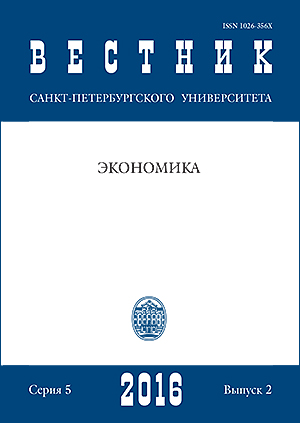Investigation of Sanctions and Oil Price Effects on the Iran-Russia Trade by Using the Gravity Model
DOI:
https://doi.org/10.21638/11701/spbu05.2016.204Аннотация
Принято считать, что санкции, введенные в 2006 г., оказали негативное влияние на экономику Ирана и серьезно ухудшили его экономические отношения с другими странами мира. Действительно, введение санкций в отношении Ирана осложнило развитие его внешней торговли, ухудшило доступ к мировым рынкам и привело к определенной экономической изоляции страны. Из-за высокой зависимости Ирана от нефтяных доходов экономика этой страны
крайне чувствительна к мировым ценам на нефть. Колебания цен на мировом рынке нефти оказывают значительное влияние на внешнюю торговлю Ирана. В данной статье рассматривается воздействие различных санкций (финансового и нефинансового характера), а также колебаний мировых цен на нефть на взаимную торговлю Ирана и России в период с 1994 по 2013 г. на основе использования гравитационной модели. Результаты исследования показали, что на двустороннюю торговлю наиболее негативное влияние из названных факторов оказывают финансовые санкции, тогда как отрицательное воздействие нефинансовых санкций и резких колебаний мировых нефтяных цен является менее значимым. Библиогр. 37 назв. Ил. 6. Табл. 7.
Ключевые слова:
санкции, нефтяная цена, ирано-российская торговля, гравитационная модель
Скачивания
Библиографические ссылки
References in Latin Alphabet
Translation of references in Russian into English
Загрузки
Опубликован
Как цитировать
Выпуск
Раздел
Лицензия
Статьи журнала «Вестник Санкт-Петербургского университета. Экономика» находятся в открытом доступе и распространяются в соответствии с условиями Лицензионного Договора с Санкт-Петербургским государственным университетом, который бесплатно предоставляет авторам неограниченное распространение и самостоятельное архивирование.






